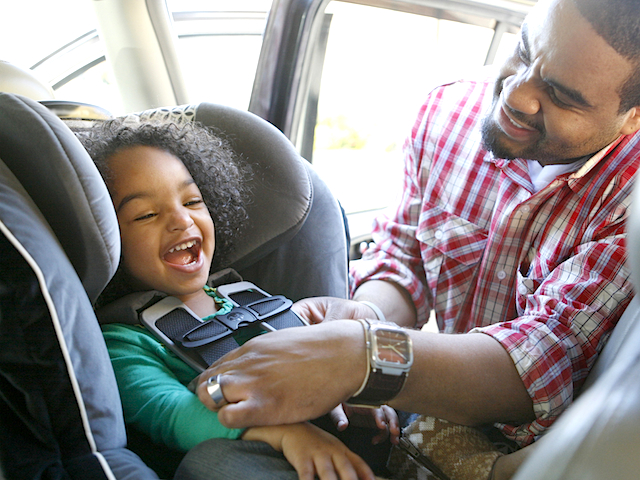In keeping with my theme of child safety this week I wanted to share some very important
information with you from my friends at Safety 1st.
When children start to get older, it becomes tempting for parents and grandparents
to turn their kids around. However, it's vital to keep your child rear-facing for as
long as possible (allowed by the car seat's height, weight, and other criteria)!
According to a study in the Journal of Injury Prevention, children under the age of two
are 75 percent less likely to die or be severely injured in the event of a car crash if
they are rear-facing. Many convertible car seats, such as the new Safety 1st Grow and
Go Air, allow children up to 40 lbs to ride rear-facing. This means that children up to
3-years-old can ride rear-facing. When a child has outgrown the rear-facing capacity of
their convertible car seat,they can begin to face forward.If you are going to switch
your child to a convertible car seat before age two, purchase a seat that will keep him
or her rear-facing.
If you have an older child, boosters are extremely important. Most states require a
child to be in a booster until 8 years old, as they have been proven to reduce the
risk of serious injury by 45%, according to Safe Kids Proper Installation Saves Lives.
 According to the National Highway Traffic Safety Association, 75% of car seats are
installed incorrectly. Are you one of those parents or grandparents? If you are not sure,
check!Remember, every car and car seat has different requirements for safe installation,
so it's important to read both the car seat and car manual.
When installing, use either the LATCH or the seat belt. Do not use both! The seat belt
is a very effective way to install a car seat but LATCH was developed to
provide another option for parents that find it challenging to properly install a
child restraint with the seat belt. Once you have the car seat installed make sure
it does not move more than one-inch side to side. If you are still unsure if you've
done it right, check in with a local Child Passenger Safety Technician before you
hit the road.
You can visit a local police station, fire station, AAA office or Safe Kids Chapter
for guidance. Or simply go to seatcheck.org
Is your seat safe?
It's something you rarely think about, but car seats expire!
(I never knew that! Did you?) You can find the expiration date on the back
or the side of the car seat. Additionally, if a car seat
has been in a crash you should not use it. Plastic can warp, materials can
fray and the car seat will not protect a child correctly. This also means that
you should avoid used car seats. The history of a car seat tells a lot about its
ability to protect on the road ahead. If you don't know where it has been, you
don't know if it can protect your child.
To recycle a car seat, check with your local waste management facility to see if
they recycle number 5 plastic.
Want to know more?
You can find more answers to commonly asked car seat questions here.
According to the National Highway Traffic Safety Association, 75% of car seats are
installed incorrectly. Are you one of those parents or grandparents? If you are not sure,
check!Remember, every car and car seat has different requirements for safe installation,
so it's important to read both the car seat and car manual.
When installing, use either the LATCH or the seat belt. Do not use both! The seat belt
is a very effective way to install a car seat but LATCH was developed to
provide another option for parents that find it challenging to properly install a
child restraint with the seat belt. Once you have the car seat installed make sure
it does not move more than one-inch side to side. If you are still unsure if you've
done it right, check in with a local Child Passenger Safety Technician before you
hit the road.
You can visit a local police station, fire station, AAA office or Safe Kids Chapter
for guidance. Or simply go to seatcheck.org
Is your seat safe?
It's something you rarely think about, but car seats expire!
(I never knew that! Did you?) You can find the expiration date on the back
or the side of the car seat. Additionally, if a car seat
has been in a crash you should not use it. Plastic can warp, materials can
fray and the car seat will not protect a child correctly. This also means that
you should avoid used car seats. The history of a car seat tells a lot about its
ability to protect on the road ahead. If you don't know where it has been, you
don't know if it can protect your child.
To recycle a car seat, check with your local waste management facility to see if
they recycle number 5 plastic.
Want to know more?
You can find more answers to commonly asked car seat questions here.
|
Thanks for info!! Alyssa has insisted on keeping Paisley facing backward. I just got a new car seat for her guess I need to turn her backwards too. Lakelyn who is 8 is still in her booster.